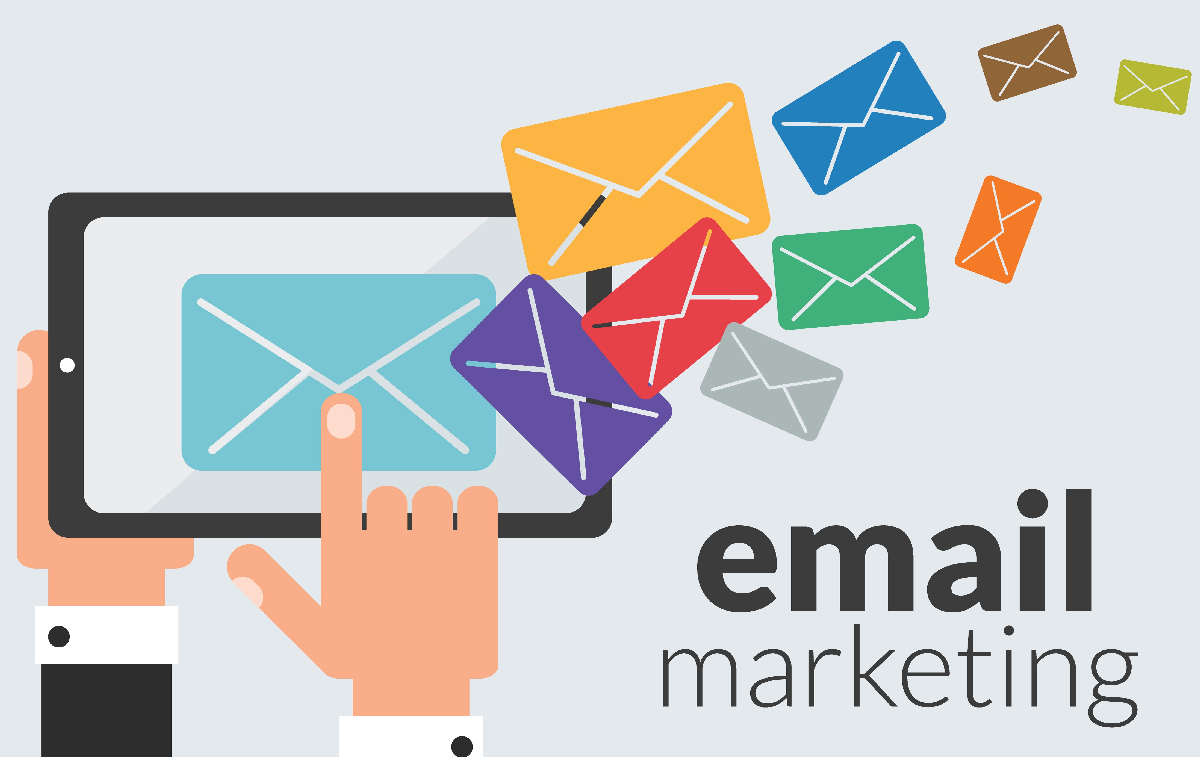
The Importance of Email Marketing in Kenya
Kenya’s digital landscape is thriving, with e-commerce and mobile-first marketing driving business growth. Email marketing stands out as a powerful channel for Kenyan marketers, offering direct, personalized communication that resonates with diverse audiences. Unlike social media, which competes for fleeting attention, email delivers targeted messages to inboxes, fostering customer retention Kenya. However, success hinges on marketing analytics and performance tracking tools to monitor email campaign performance. By tracking key email marketing metrics, Kenyan marketers can optimize personalized email campaigns, align with marketing trends 2025, and achieve a high ROI of email marketing.
Why Metrics Matter for Kenyan Marketers
- Data-Driven Decisions: Marketing analytics provide insights into customer behavior, enabling data-driven marketing strategies.
- Cost Efficiency: Email is one of the most cost-effective channels, with studies showing a $42 return for every $1 spent globally, making it ideal for SMEs.
- Personalization: Metrics guide audience segmentation, ensuring personalized email campaigns resonate with Kenya’s diverse consumers.
- Competitive Edge: In Kenya’s competitive market, tracking email engagement helps brands stand out and retain customers.
Key Email Marketing Metrics to Track in 2025
To optimize email strategy, Kenyan marketers must focus on the following email marketing metrics, each offering unique insights into email campaign performance.

- Open Rate
Open rate measures the percentage of recipients who open an email, indicating the effectiveness of subject lines and sender reputation. In Kenya, where mobile-first marketing dominates, crafting mobile-optimized subject lines in Swahili or English is critical. For example, a Nairobi-based fashion retailer might use a subject line like “Pata Ofa za Mitindo Leo!” (Get Fashion Deals Today!) to boost open rates among Gen Z and Millennial consumers.
How to Optimize:
- Use concise, compelling subject lines (under 50 characters for mobile).
- Personalize with recipient names or location, e.g., “Sarah, New Arrivals in Nairobi!”
- Test A/B subject lines to identify what drives higher open rates.
- Ensure email deliverability by maintaining a clean sender reputation.
Goal: Aim for an open rate of 15–25%, aligning with global benchmarks, though Kenyan marketers may see variations based on industry.
- Click-Through Rate (CTR)
Click-through rate (CTR) measures the percentage of recipients who click on links within an email, reflecting content relevance and CTA effectiveness. For digital marketing Kenya, a high CTR indicates that emails resonate with the target audience. For instance, a Kisumu-based restaurant could include a CTA like “Order Now for Fast Delivery” in an email, driving clicks to its online menu.
How to Optimize:
- Use clear, action-oriented CTAs, e.g., “Shop Now” or “Book Today.”
- Incorporate visually appealing buttons for mobile users.
- Segment audiences based on interests, e.g., targeting urban professionals with premium offers.
- Use marketing automation tools like Mailchimp to track CTR and refine content.
Goal: Target a CTR of 2–5%, adjusting based on ad performance analytics and audience behavior.
- Conversion Rate
Conversion rate measures the percentage of recipients who complete a desired action, such as making a purchase or filling out a form, after clicking a link. This metric directly ties to ROI of email marketing. For example, a Mombasa-based tour operator could track how many email recipients book a safari after clicking a promotional link.

How to Optimize:
- Align email content with landing pages to ensure a seamless user experience.
- Use personalized email campaigns to target specific segments, e.g., offering student discounts to young adults.
- Include limited-time offers to create urgency, e.g., “Book by Midnight for 10% Off!”
- Implement conversion tracking via performance tracking tools like Google Analytics.
Goal: Aim for a conversion rate of 1–3%, depending on the industry and campaign goals.
- Bounce Rate
Bounce rate measures the percentage of emails that fail to reach recipients’ inboxes, either due to invalid addresses (hard bounces) or temporary issues like full inboxes (soft bounces). High bounce rates harm email deliverability and sender reputation, critical for Kenyan marketers targeting rural and urban audiences.
How to Optimize:
- Regularly clean email lists to remove invalid addresses.
- Use double opt-in to ensure subscribers provide valid emails.
- Monitor email deliverability with tools like Sendy, a Kenyan-based platform.
- Avoid spammy content to prevent emails from landing in junk folders.
Goal: Keep bounce rates below 2% to maintain strong email deliverability.
- Unsubscribe Rate
Unsubscribe rate measures the percentage of recipients who opt out of receiving emails, indicating content relevance and frequency issues. A high unsubscribe rate signals that emails aren’t resonating with audience segmentation.
How to Optimize:
- Send emails at optimal frequencies (e.g., weekly for retail, monthly for B2B).
- Offer preference centers to let subscribers choose content types or frequency.
- Use personalized email campaigns to align content with audience interests.
- Analyze feedback from unsubscribers to refine email strategy.
Goal: Maintain an unsubscribe rate below 0.5% to ensure customer retention Kenya.
- Email Deliverability
Email deliverability measures the percentage of emails that successfully reach recipients’ inboxes, a critical factor for email campaign performance. In Kenya, where spam filters are increasingly sophisticated, ensuring high deliverability is essential.

How to Optimize:
- Authenticate emails with SPF, DKIM, and DMARC to build trust with email providers.
- Avoid trigger words like “free” or “win” in subject lines.
- Use reputable email service providers like Mailchimp or Sendy.
- Monitor sender reputation with tools like Sender Score.
Goal: Achieve email deliverability above 95% to maximize campaign reach.
- List Growth Rate
List growth rate measures the rate at which an email list grows, reflecting the success of lead generation efforts. For Kenyan marketers, growing a quality email list is vital for scaling personalized email campaigns.
How to Optimize:
- Use website pop-ups or social media lead forms to capture emails.
- Offer incentives like discounts or free resources, e.g., “Sign Up for 10% Off Your First Order.”
- Promote sign-ups via social media marketing on platforms like Instagram.
- Ensure compliance with Kenya’s Data Protection Act for ethical list building.
Goal: Aim for a list growth rate of 5–10% monthly, balancing quality and quantity.
- Email Engagement
Email engagement encompasses overall interactions with emails, including opens, clicks, replies, and forwards. It reflects how well campaigns resonate with audiences and drive customer retention Kenya.
How to Optimize:
- Use audience segmentation to deliver relevant content, e.g., targeting rural farmers with agricultural product emails.
- Incorporate interactive elements like polls or quizzes to boost engagement.
- Leverage marketing automation to send triggered emails, such as cart abandonment reminders.
- Test email designs for mobile compatibility, aligning with mobile-first marketing.
Goal: Increase email engagement metrics by 10–20% through consistent optimization.
Aligning with Marketing Trends 2025
Marketing trends 2025 emphasize data-driven marketing and personalized email campaigns. Kenyan marketers can stay ahead by:

- Adopting AI Tools: AI-powered marketing automation platforms like HubSpot predict optimal send times and personalize content, boosting open rates and CTR.
- Focusing on Mobile: With mobile-first marketing dominant, ensure emails are responsive and load quickly on smartphones.
- Leveraging Swahili: Use Swahili subject lines and content to resonate with rural and urban audiences, enhancing email engagement.
- Integrating with Other Channels: Combine email with social media marketing or WhatsApp marketing to create cohesive campaigns.
Challenges and Solutions
- Low Digital Literacy: Some SMEs lack expertise in marketing analytics. Use user-friendly platforms like Sendy or Mailchimp with built-in analytics.
- Spam Filters: Strict filters can impact email deliverability. Avoid spammy tactics and maintain clean lists.
- Audience Fatigue: Over-emailing can increase unsubscribe rates. Use audience segmentation to send relevant, infrequent emails.
Measuring Success with Performance Tracking Tools
Performance tracking tools like Google Analytics, Mailchimp Analytics, or Sendy provide insights into email marketing metrics. For example, a Mombasa-based travel agency could track conversion rates for emails promoting coastal tours, refining subject lines to boost open rates. Regular analysis ensures campaigns align with digital consumer behavior Kenya and deliver ROI of email marketing.
Conclusion
In 2025, email marketing remains a vital tool for Kenyan marketers, offering a cost-effective way to drive customer retention Kenya. By tracking email marketing metrics like open rate, click-through rate (CTR), conversion rate, bounce rate, unsubscribe rate, email deliverability, list growth rate, and email engagement, marketers can optimize email campaign performance. Leveraging marketing automation, audience segmentation, and personalized email campaigns aligns with marketing trends 2025, ensuring relevance in Kenya’s competitive market. With data-driven marketing and robust performance tracking tools, Kenyan marketers can maximize ROI of email marketing, building stronger connections with audiences and driving sustainable growth in digital marketing Kenya.